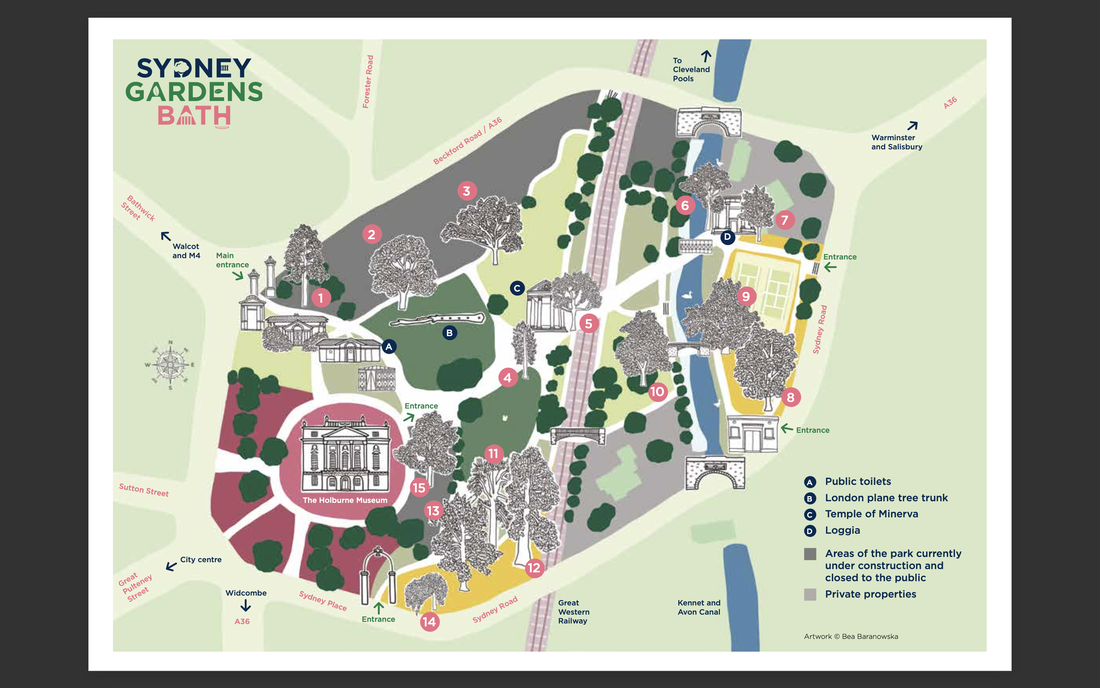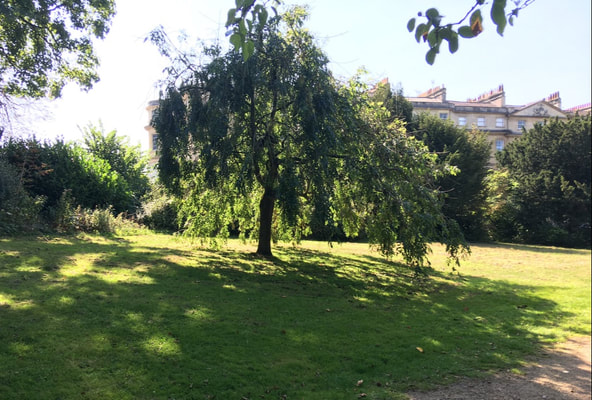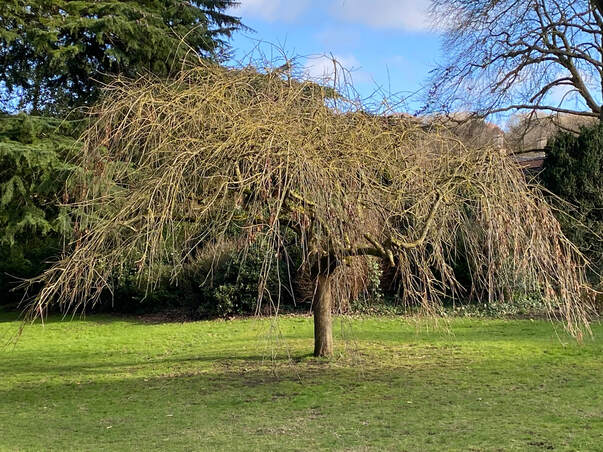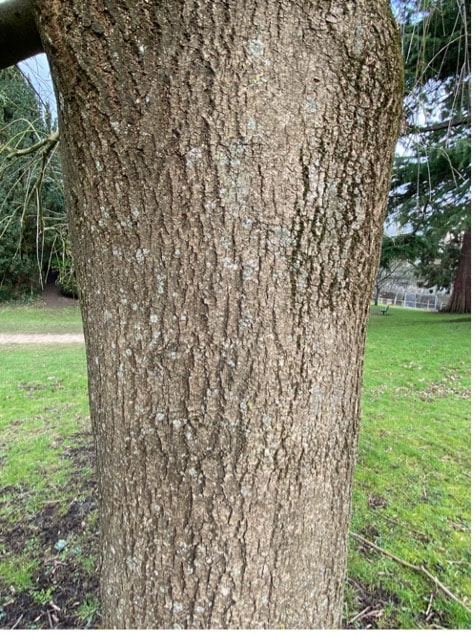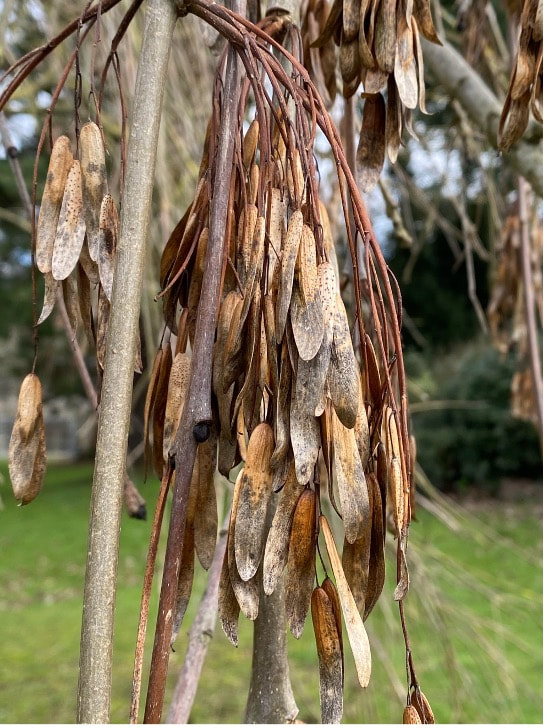The Weeping Ash in Sydney Gardens can be found in the grass area between the railway line and the bottom entrance into the park from Sydney Road. The Ash, native throughout Europe is a medium sized deciduous tree growing 12-18m tall with a life span of 200-250 years.
The weeping Ash has an umbrella-shaped crown, with pendulous branches arching to the ground. The trunk is smooth and pale greenish/grey in early years of growth and with age it becomes thicker, brown in colour and develops shallow fissures.
In spring the weeping ash produces small dark purple flowers before the leaves appear, which are wind pollinated. The ash tree can produce male and female flowers on the same tree. or just male or female flowers. Additionally, if the tree has produced male flowers one year the following year it can produce female flowers. The fruit/seeds of the ash are commonly known as keys or helicopters; the wings aiding dispersal by the wind.
The buds of the weeping ash are jet-black, one of its distinguishing features: most of the other ash species have brown or grey buds. The leaves are 20-35cm long with 7-13 small leaflets attached to the central stem, in opposite formation. The leaflets are 3-12cm long and have an attractive pinnate form. The green leaves are often late to open in the Spring and early to fall in the autumn; having become bright yellow.
Sadly, Weeping Ash are extremely susceptible to ‘Ash Die Back’, which is caused by an Ascomycete fungus. This fungus has caused the loss of a high percentage of the woodland ash tree, so it is probable this tree will succumb.
References
Gazzard, G. A. MSc (2021) wrote the above article with information from the following sources.
Rose, B. BSc (Hons) MSc DipArb(RFS) MICFor RCArborA Chartered Arboriculturist Arboricultural Association Registered Consultant (2020). Bosky Trees, Arboricultural Impact Assessment & Tree Protection Plan for trees at Sydney Gardens, Bath. (Accessed 13/03/21).
RHS; Weeping Ash. (Accessed 13/03/21). Available at:
https://www.rhs.org.uk/Plants/93971/Fraxinus-excelsior-Pendula/Details
Glasgow Botanical Gardens; Weeping Ash. (Accessed 13/03/21). Available at:
https://www.glasgowbotanicgardens.com/projects/national-tree-collections-of-scotland/tree-trail-online/5-weeping-ash/
Wikipedia; Weeping Ash. (Accessed 13/03/21). Available at:
https://en.wikipedia.org/wiki/Fraxinus_excelsior
Gazzard, G. A. MSc (2021) wrote the above article with information from the following sources.
Rose, B. BSc (Hons) MSc DipArb(RFS) MICFor RCArborA Chartered Arboriculturist Arboricultural Association Registered Consultant (2020). Bosky Trees, Arboricultural Impact Assessment & Tree Protection Plan for trees at Sydney Gardens, Bath. (Accessed 13/03/21).
RHS; Weeping Ash. (Accessed 13/03/21). Available at:
https://www.rhs.org.uk/Plants/93971/Fraxinus-excelsior-Pendula/Details
Glasgow Botanical Gardens; Weeping Ash. (Accessed 13/03/21). Available at:
https://www.glasgowbotanicgardens.com/projects/national-tree-collections-of-scotland/tree-trail-online/5-weeping-ash/
Wikipedia; Weeping Ash. (Accessed 13/03/21). Available at:
https://en.wikipedia.org/wiki/Fraxinus_excelsior
